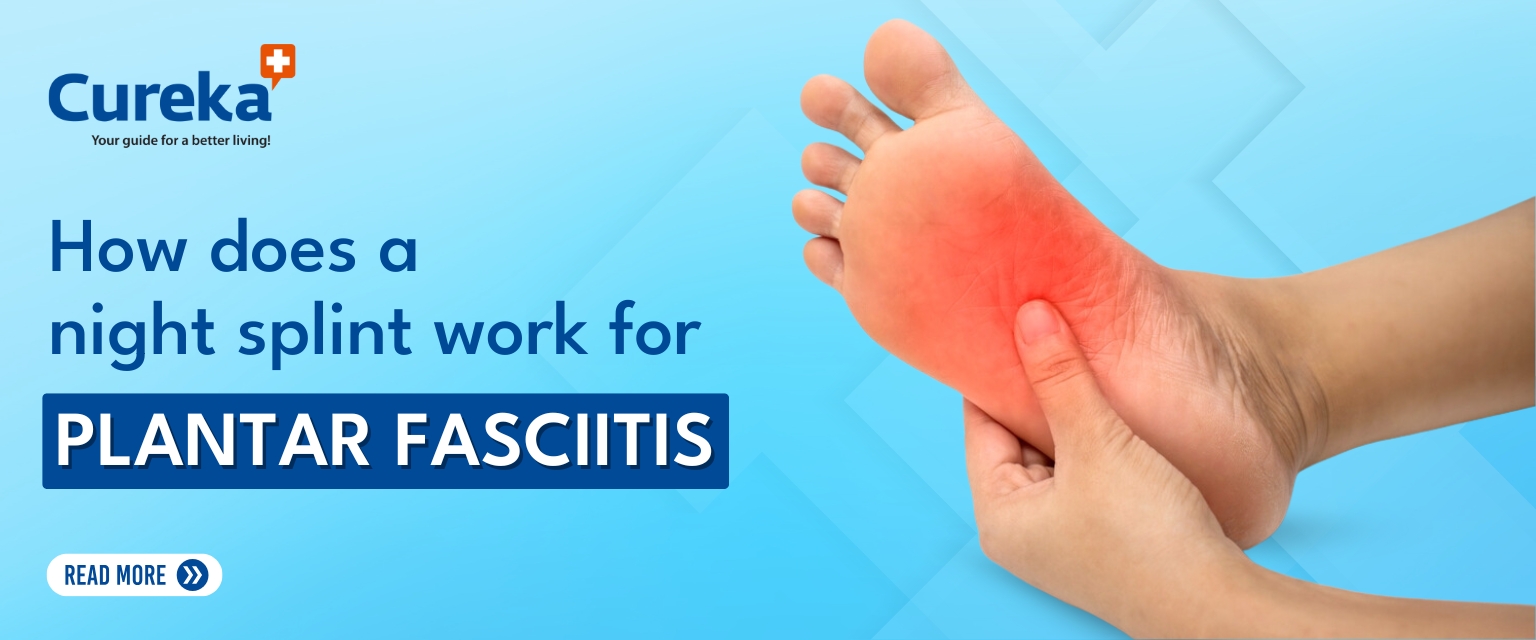How Does a Night Splint Work for Plantar Fasciitis?
Plantar fasciitis, a common condition that leads to intense heel pain, occurs due to inflammation in the plantar fascia—a thick band of tissue along the bottom of the foot. Among various treatments for this painful condition, the use of a night splint has gained popularity. But how exactly does it work, and what does the latest research say about its effectiveness?
What is a Night Splint?
A night splint for plantar fasciitis is a device designed to keep your foot in a stretched position while you sleep. The foot is held in dorsiflexion, meaning the toes are pointed upward, which helps maintain a gentle stretch on the plantar fascia and Achilles tendon overnight.
The goal of this prolonged stretch is to prevent the plantar fascia from contracting, reducing morning heel pain and allowing the tissue to heal over time. Different types of night splints for feet are available, ranging from hard, boot-like designs to softer, more flexible options.
How Does a Night Splint Help with Plantar Fasciitis?
- Prevents Morning Stiffness
For most people with plantar fasciitis, the first steps in the morning are often the most painful. This is due to the plantar fascia tightening during sleep. A plantar fasciitis night splint helps by maintaining a stretched position, preventing the fascia from becoming tense overnight and reducing the sharp, stabbing pain upon waking.
- Reduces Inflammation
By stretching the plantar fascia and the Achilles tendon, night splints help alleviate the pressure on these tissues, reducing inflammation over time. Continuous use of a night splint for heel pain can significantly lower the risk of further injury, allowing the tissue to heal properly.
- Promotes Healing
Consistent stretching through the night helps encourage the fascia to heal in an elongated position, making it less prone to re-injury. Over time, this helps speed up recovery and prevents the development of chronic plantar fasciitis.
Does a Night Splint Make a Difference in Managing Plantar Fasciitis?
In managing plantar fasciitis, conservative treatments like stretching exercises, anti-inflammatory medications, and footwear adjustments have proven effective in reducing pain and improving mobility. To address morning heel pain, night splints are sometimes added to these treatments. A clinical study involving over 100 participants with plantar fasciitis indicated that while night splints may not significantly enhance overall recovery rates, they can help reduce morning stiffness, making them a worthwhile option for patients seeking added comfort and non-invasive support in their treatment routine. Although age and other factors, such as heel spurs, can sometimes impact outcomes, night splints remain a practical choice for patients seeking extra support, especially for those whose morning pain limits mobility.
While night splints for plantar fasciitis may not dramatically increase recovery rates compared to other conservative treatments like stretching and anti-inflammatory medication, they remain a valuable option for patients struggling with morning heel pain. The ability to reduce morning stiffness alone makes it a worthwhile consideration, particularly for those looking for additional non-invasive solutions to manage their symptoms.
Choosing the Best Night Splint for Plantar Fasciitis
Finding the best plantar fasciitis night splint can make a significant difference in terms of comfort and compliance. Here are a few tips for selecting the right splint:
Comfort: Ensure the splint has padding around the foot and ankle to avoid skin irritation.
Adjustability: Look for a splint with adjustable straps that allow you to control the tension and ensure a proper fit.
Breathability: Consider splints made from breathable materials to avoid overheating during sleep.
Durability: A lightweight yet sturdy design can help ensure long-lasting use.
Additional Treatment Options for Plantar Fasciitis
Although night splints for feet are effective for many, they work best when combined with other conservative treatments, such as:
Stretching exercises: Regular stretches for the Achilles tendon and plantar fascia help maintain flexibility and reduce tension.
Orthotic supports: Using shoe inserts or custom orthotics helps alleviate the strain on the plantar fascia during daily activities.
Anti-inflammatory treatments: Oral medications or topical treatments can help reduce inflammation and pain.
Physical therapy: A physical therapist can guide you through exercises and treatment plans tailored to your specific condition.
Conclusion
A night splint for plantar fasciitis helps by stretching the plantar fascia and Achilles tendon, reducing morning stiffness, and promoting healing. While studies suggest that night splints may not drastically outperform other conservative treatments, they can provide significant relief for patients struggling with nighttime and early morning pain.
If you’re considering adding a night splint for heel pain to your treatment plan, be sure to consult your healthcare provider to find the best solution for your needs. Consistency and combined treatments will likely lead to the best outcomes for managing plantar fasciitis and getting back on your feet pain-free.
References :
- The effectiveness of dorsiflexion night splint added to conservative treatment for plantar fasciitis – 2007 – https://pubmed.ncbi.nlm.nih.gov/17876122/
- Night splint treatment for plantar fasciitis. A prospective randomized study – 1999 Nov – https://pubmed.ncbi.nlm.nih.gov/10613168/
- The use of night splints for treatment of recalcitrant plantar fasciitis – 1991 Dec – https://pubmed.ncbi.nlm.nih.gov/1791004/











